Determination of Flow Characteristics of Ohashi River through 3-D Hydrodynamic Model under Simplified and Detailed Bathymetric Conditions
Abstract
1. Introduction
2. Materials and Methods
2.1. Study Area
2.2. Reliability of Observed Flowrate of Ohashi River and Its Control Over Salinity Variation of Lake Shinji
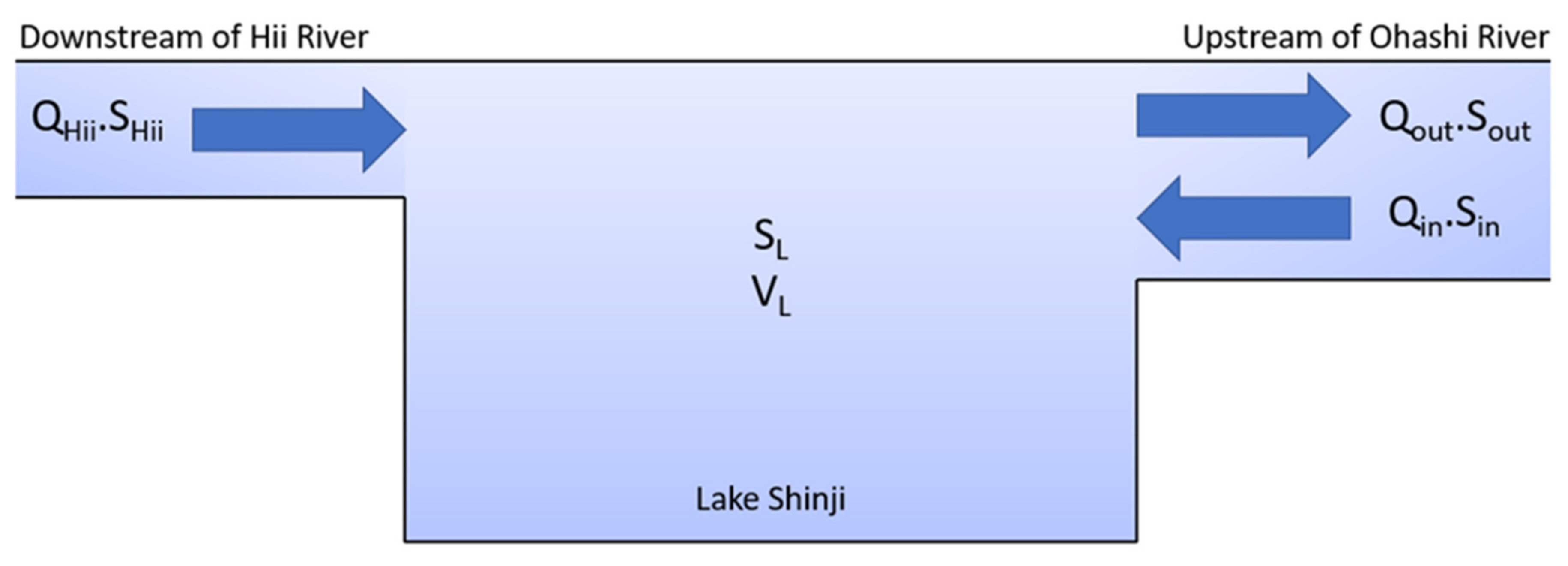
- SL = Salinity of Lake Shinji.
- SLO = Initial condition of salinity in Lake Shinji; it was taken from observed data.
- SHii = Salinity of Hii River water draining into Lake Shinji; it was assumed as zero.
- Sin = Salinity of saline intruded water from upstream of Ohashi River.
- Sout = Salinity of relatively freshwater going out of Lake Shinji through Ohashi River.
- VL = Volume of Lake Shinji (m3).
- QHii = Flowrate of Hii River.
- Qin = Depth integrated flowrate of freshwater going out of Lake Shinji.
- Qout = Depth integrated flowrate of saline water intruding along the bottom of Ohashi River.
- ∆t = Time Interval between observations (s).
2.3. Description and Configuration of Hydrodynamic Model
2.4. Initial and Boundary Conditions for Hydrodynamic Simulations
2.5. Experiments Design
3. Results and Discussions
3.1. Reliability of Observed Flowrate
3.2. Numerical Simulations
- u = Westward flow velocity (m/s)
- K = Water flux coefficient (m1/2/sec−1).
- ∆h = Water level difference between the upstream and downstream of Ohashi River (m).
- c = Regression equation constant.
| Case | Regression Equation | K.A |
| 1 | u2 = 0.532(∆h + c) | 437.25 |
| 2 | u2 = 0.772(∆h + c) | 636.02 |
| 3 | u2 = 0.372(∆h + c) | 341.88 |
| 4 | u2 = 0.492(∆h + c) | 452.76 |
4. Conclusions
Author Contributions
Funding
Institutional Review Board Statement
Informed Consent Statement
Data Availability Statement
Acknowledgments
Conflicts of Interest
References
- Muchebve, E.; Nakamura, Y.; Suzuki, T.; Kamiya, H. Analysis of the dynamic characteristics of seawater intrusion using partial wavelet coherence: A case study at Nakaura Watergate, Japan. Stoch. Environ. Res. Risk Assess. 2016, 30, 2143–2154. [Google Scholar] [CrossRef]
- Fukuoka, S.; Yamamoya, A.; Okamura, S.; Mizoyama, I. Estimation of salinity flux and variation of salinity in Lake Shinji. Annu. J. Hydraul. Eng. JSCE 2005, 49, 1249–1254. [Google Scholar] [CrossRef]
- Sugai, R.; Mutaguchi, S.; Matsumoto, M. Studies on formations and changes of micro-stratification in blackish water Lake Shinji. Jpn. J. Limnol. 1989, 47, 315–324. [Google Scholar] [CrossRef]
- Sugai, R.; Sugahara, S.; Seike, Y. Salinity fluctuation factor in the brackish Lake Shinji. Laguna 2017, 24, 19–25. [Google Scholar]
- Inoue, T.; Sugahara, S.; Seike, Y.; Kamiya, H.; Nakamura, Y. Short-term variation in benthic phosphorus transfer due to discontinuous aeration/oxygenation operation. Limnology 2017, 18, 195–207. [Google Scholar] [CrossRef]
- Ishitobi, Y.; Kamiya, H.; Hayashi, K.; Gomyoda, M. The tidal exchange in Lake Shinji under low discharge conditions. Jpn. J. Limnol. 1989, 50, 105–113. [Google Scholar] [CrossRef]
- Masuki, S.; Toshima, K.; Bessyo, H.; Wada, Y.; Sugahara, S. Changes in water quality during Blue Tide formation in Jyushiken River on the west side Lake Shinji. J. Japan Soc. Water Environ. 2013, 36, 143–148. [Google Scholar] [CrossRef]
- Ishitobi, Y.; Kamiya, H.; Yokoyama, K.; Kumagai, M.; Okuda, S. Physical conditions of saline water intrusion into a coastal lagoon, Lake Shinji, Japan. Jpn. J. Limnol. 1999, 60, 439–452. [Google Scholar] [CrossRef]
- Fukuoka, S.; Matsushita, T.; Okamura, S.; Imai, S.; Funabashi, S. Behavior and characteristics of saline water advancing into a brackish lake. Annu. J. Hydraul. Eng. JSCE 2004, 48, 1405–1410. [Google Scholar] [CrossRef][Green Version]
- Uye, S.; Shimazu, T.; Yamamuro, M.; Ishitobe, Y.; Kamiya, H. Geographical and seasonal variations in mesozooplankton abundance and biomass in relation to environmental parameters in Lake Shinji–Ohashi River–Lake Nakaumi brackish-water system, Japan. J. Mar. Syst. 2000, 26, 193–207. [Google Scholar] [CrossRef]
- Li, N.; Kinzelbach, W.; Li, W.P.; Dong, X.G. Box model and 1D longitudinal model of flow and transport in Bosten lake, China. J. Hydrol. 2015, 524, 62–71. [Google Scholar] [CrossRef]
- Tanaka, Y.; Suzuki, K. Development of Non-Hydrostatic Numerical Model for Stratified Flow and Upwelling in Estuary and Coastal Areas; Technical Report; Port and Airport Research Institute: Yokosuka, Japan, 2010. (In Japanese) [Google Scholar]
- Tanaka, Y.; Nakamura, Y.; Suzuki, K.; Inoue, T.; Nishimura, Y. Development on the Pelagic Ecosystem Model Considering the microbial Loop for Estuary and Coastal Areas; Technical Report; Port and Airport Research Institute: Yokosuka, Japan, 2011. (In Japanese) [Google Scholar]
- Hafeez, M.A.; Nakamura, Y.; Suzuki, T.; Inoue, T.; Matsuzaki, Y.; Wang, K.; Moiz, A. Integration of Weather Research and Forecasting (WRF) model with regional coastal ecosystem model to simulate the hypoxic conditions. Sci. Total Environ. 2021, 771, 145290. [Google Scholar] [CrossRef] [PubMed]
- Tanaka, Y.; Kanno, A.; Shinohara, R. Effects of global brightening on primary production and hypoxia in Ise Bay, Japan. Estuar. Coast. Shelf Sci. 2014, 148, 97–108. [Google Scholar] [CrossRef]
- Smagorinksy, J. General circulation experiments with primitive equations. Mon. Weather Rev. 1963, 91, 99–164. [Google Scholar] [CrossRef]
- Henderson-Sellers, B. New formulation of eddy diffusion thermocline models. Appl. Math. Model. 1985, 9, 441–446. [Google Scholar] [CrossRef]
- Nakamura, Y.; Hayakawa, N. Modelling of thermal stratification in lakes and coastal seas. In Proceedings of the 20th General Assembly of the International Union of Geodesy and Geophysics, Vienna, Austria, 11–24 August 1991; pp. 227–236. [Google Scholar]
- Nakata, K.; Horiguchi, F.; Yamamuro, M. Model study of Lakes Shinji and Nakaumi—A coupled coastal lagoon system. J. Mar. Syst. 2000, 26, 145–169. [Google Scholar] [CrossRef]
- Pugh, D.T. Tides, Surges and Mean Sea-Level, A Handbook for Engineers and Scientists; John Wiley & Sons Ltd.: Hoboken, NJ, USA, 1987. [Google Scholar]
- Wilcox, B. Tidal movement in the Cape Cod canal, Massachusetts. J. Hydraul. Div. 1958, 84, 1–9. [Google Scholar] [CrossRef]
- Fujii, T.; Naganawa, S. Approximate solution of water level change in brackish lakes. Jpn. J. Limnol. 1995, 56, 303–307. [Google Scholar] [CrossRef]

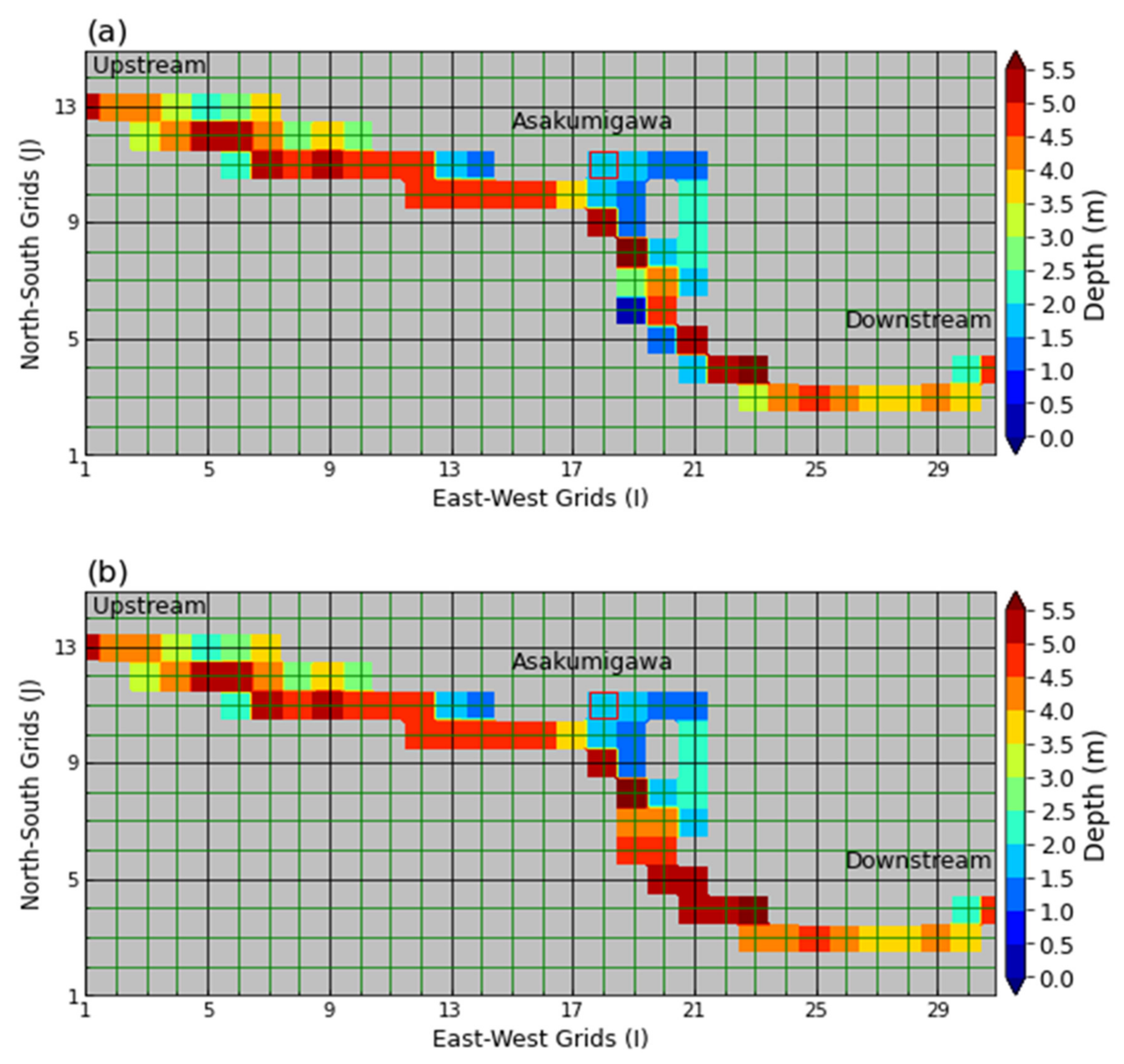
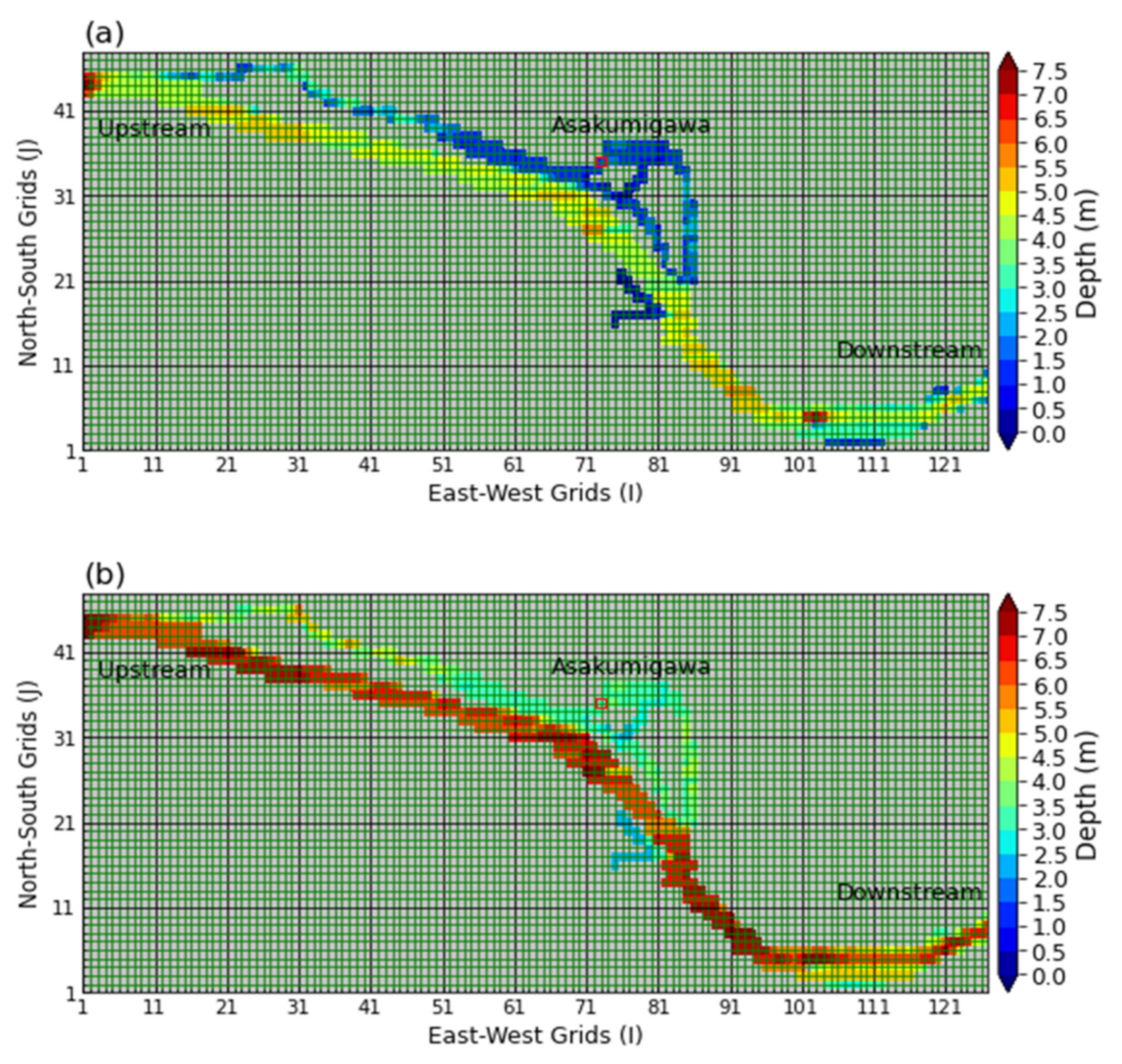

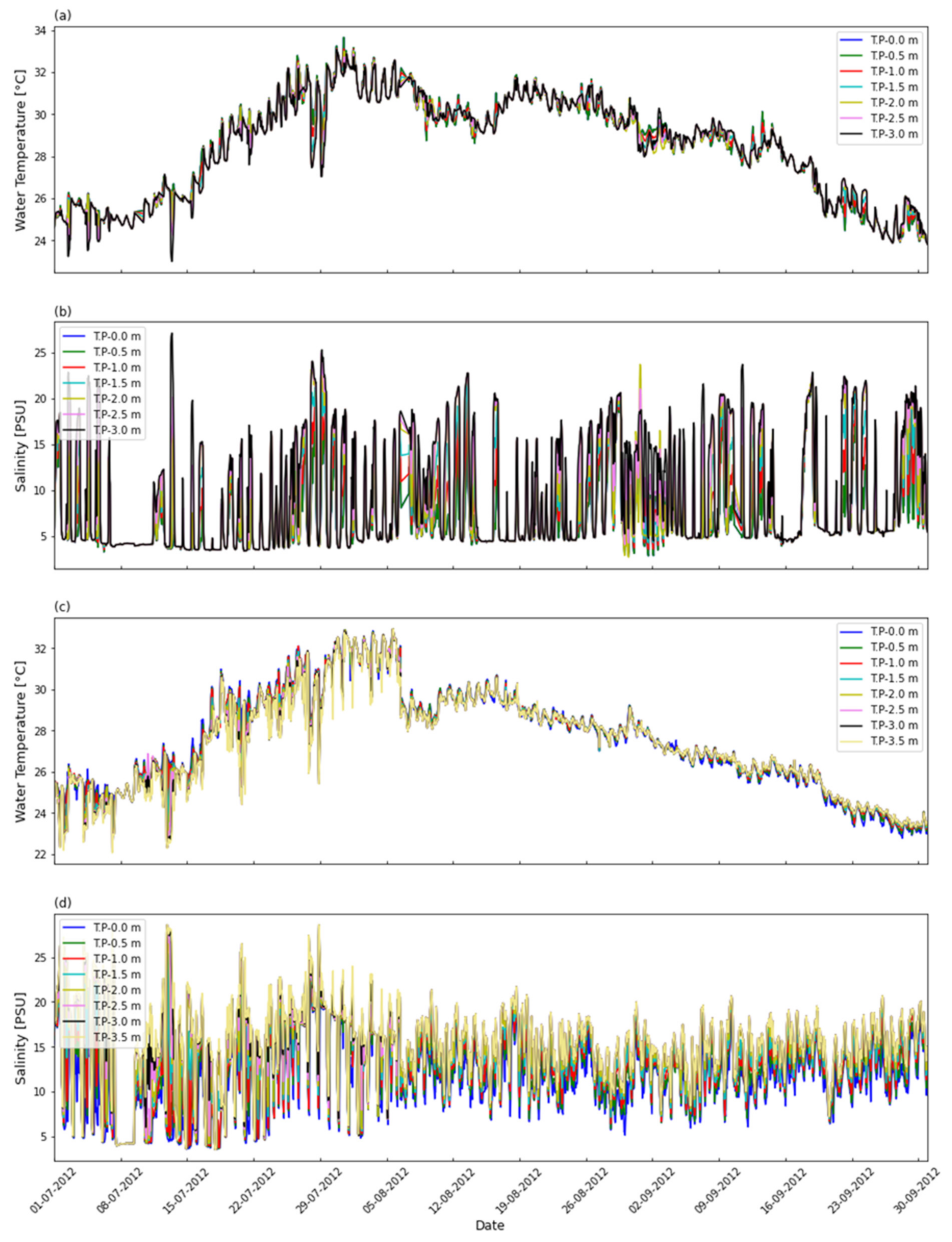
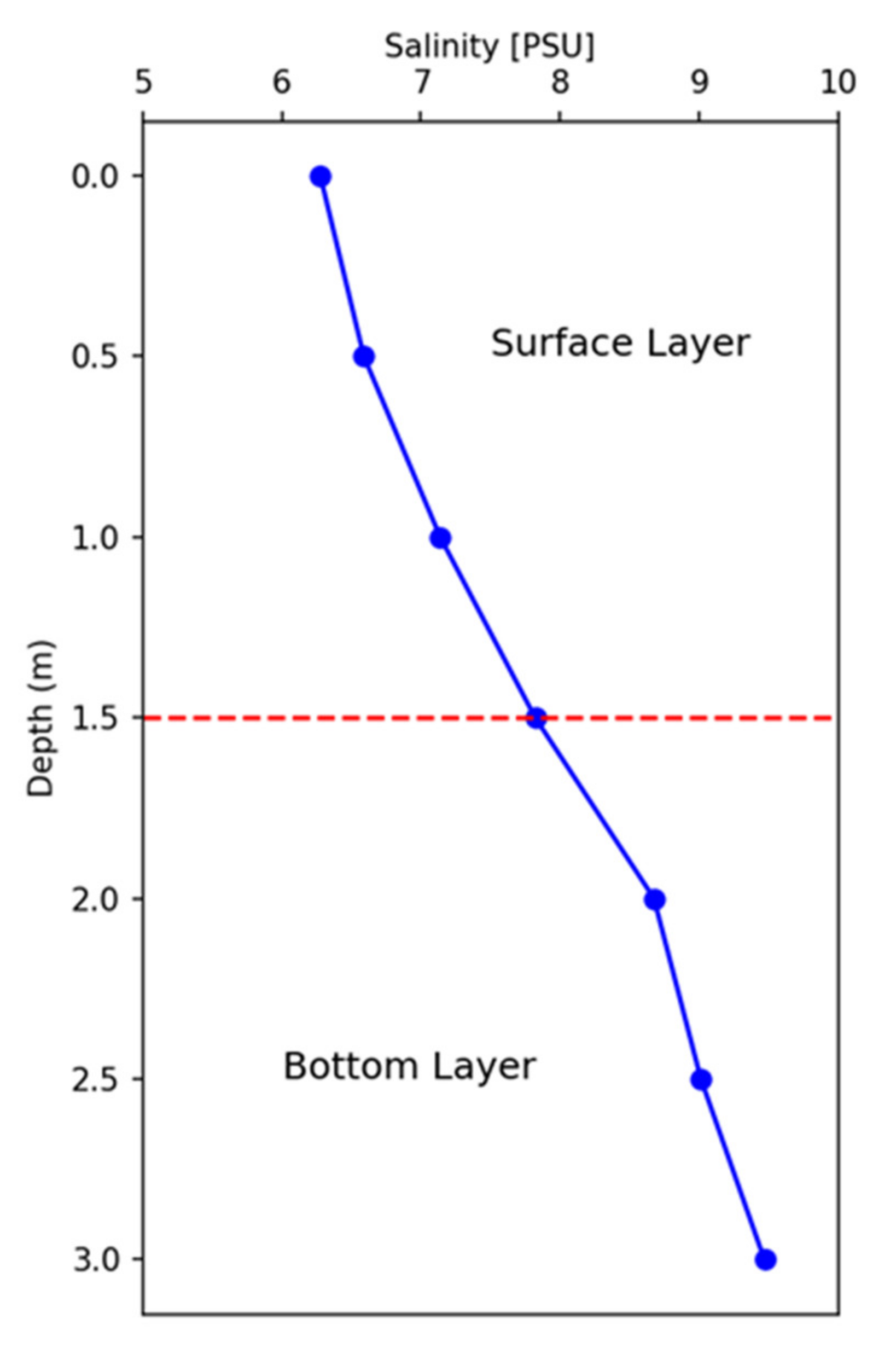
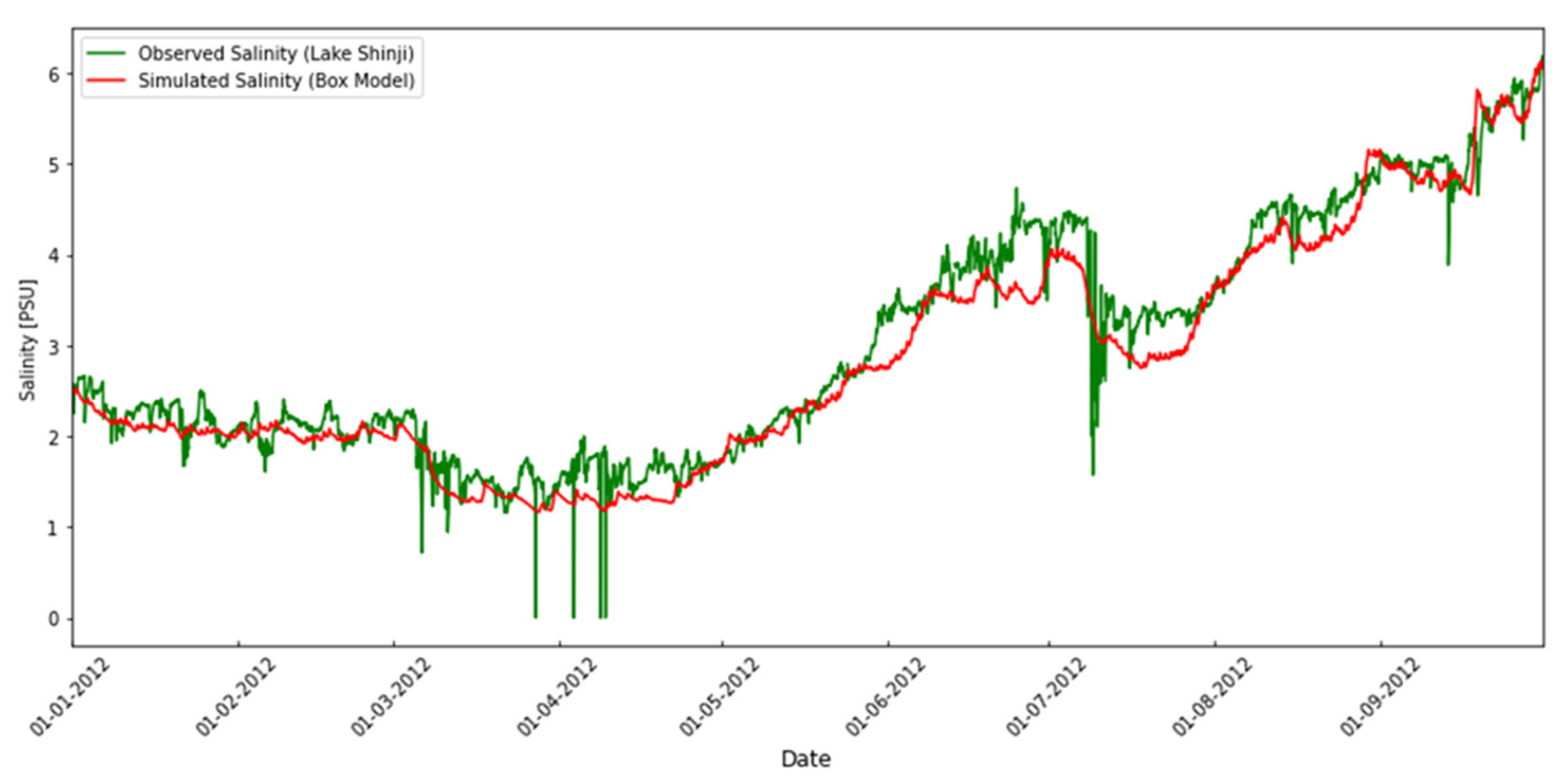
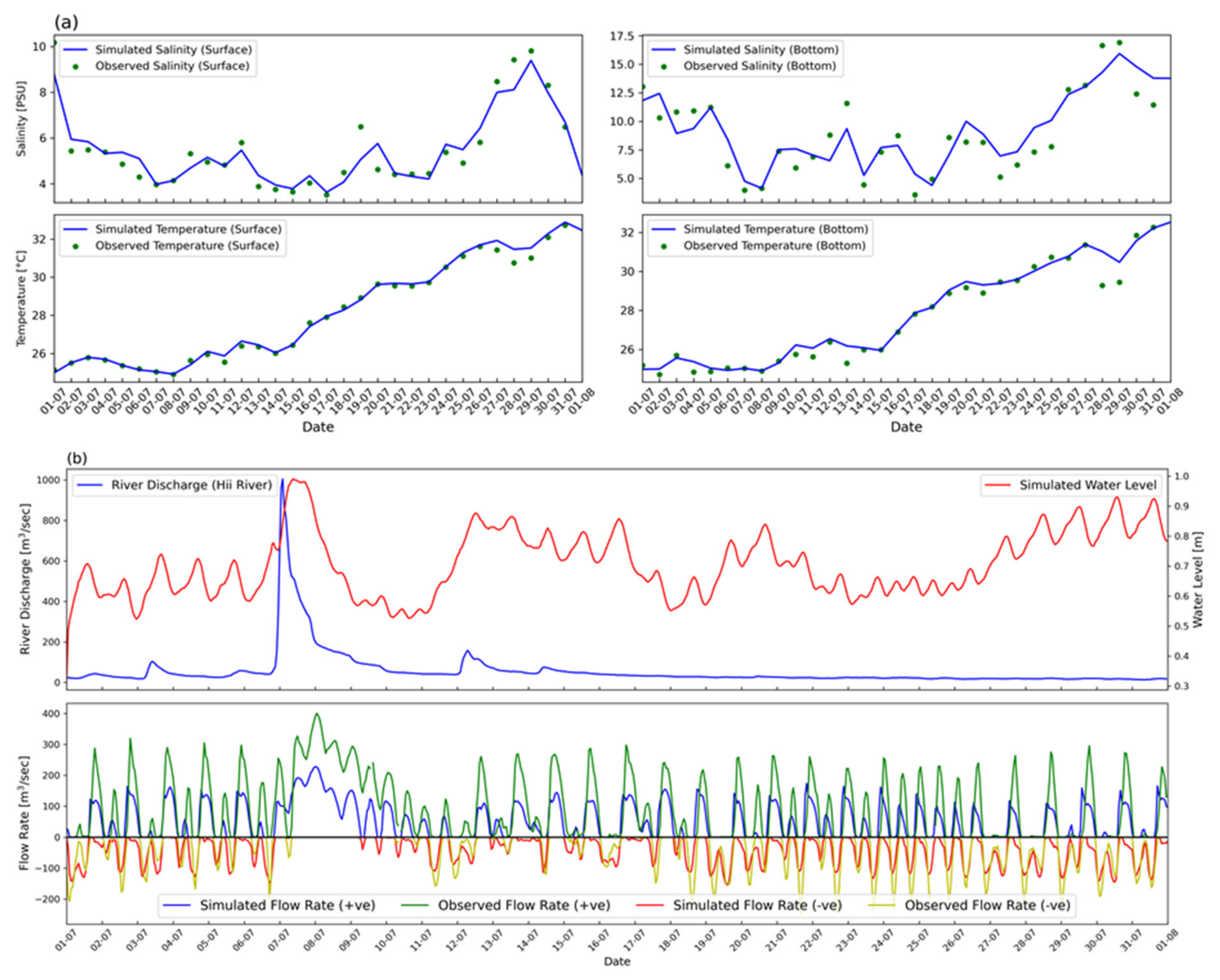
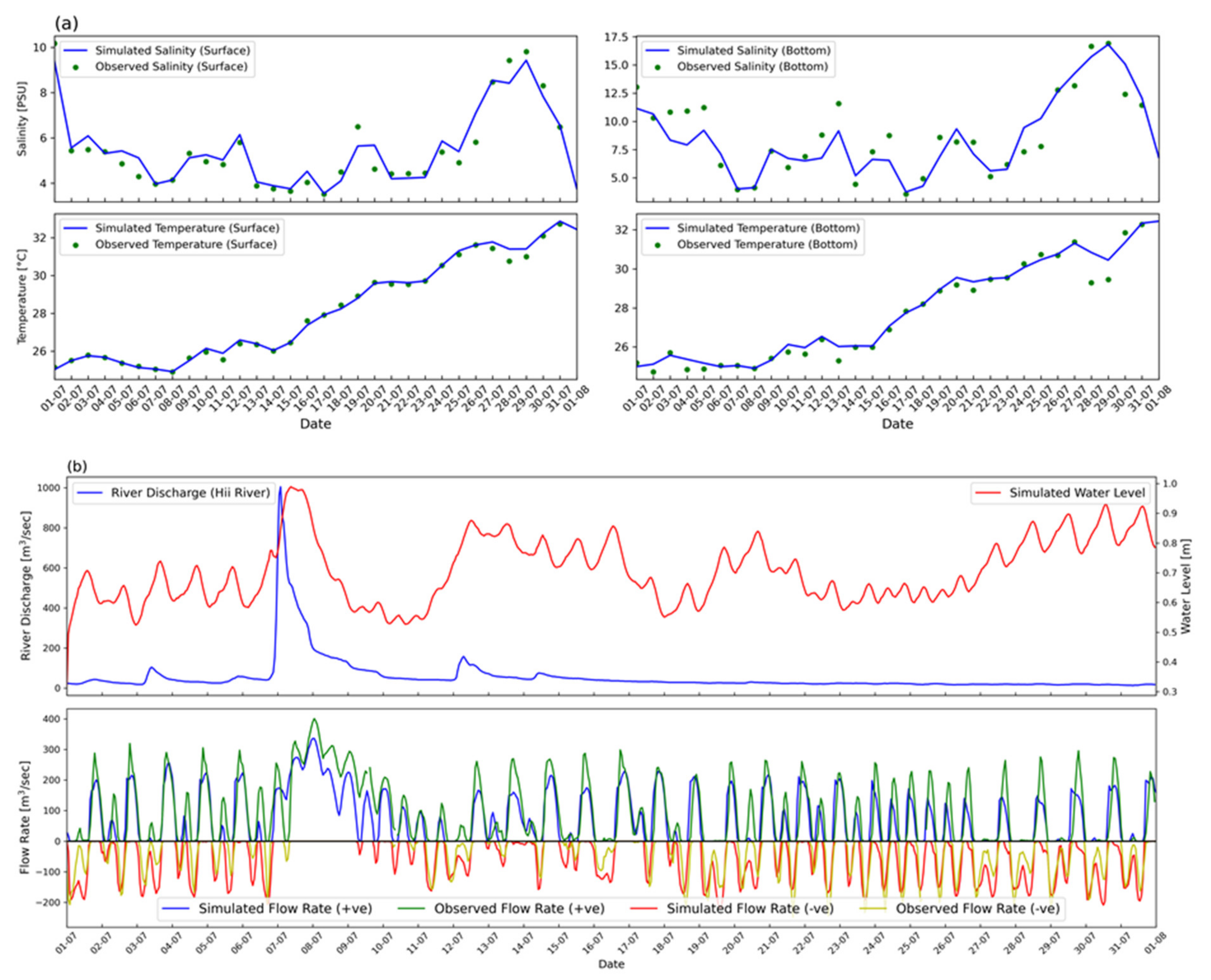
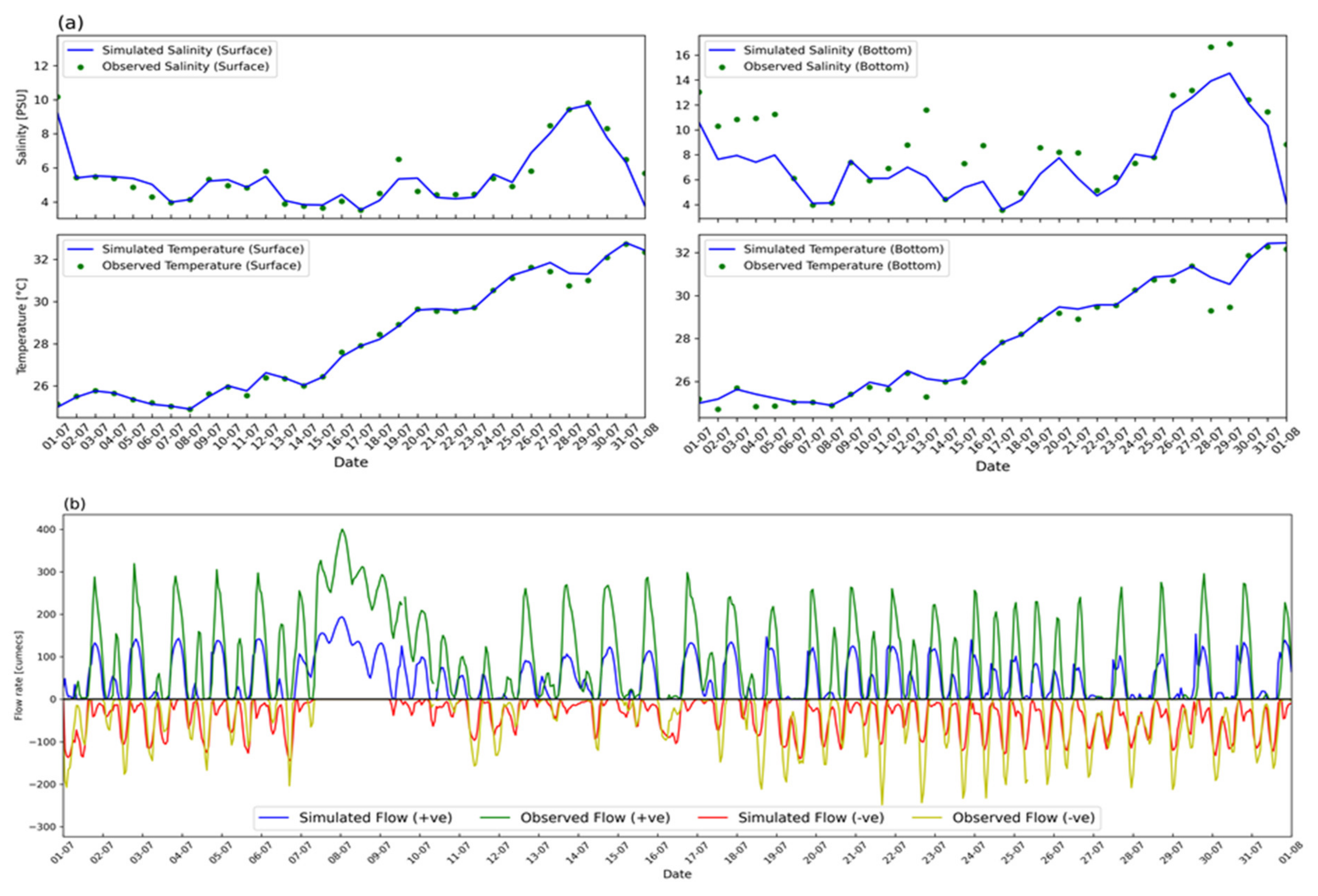

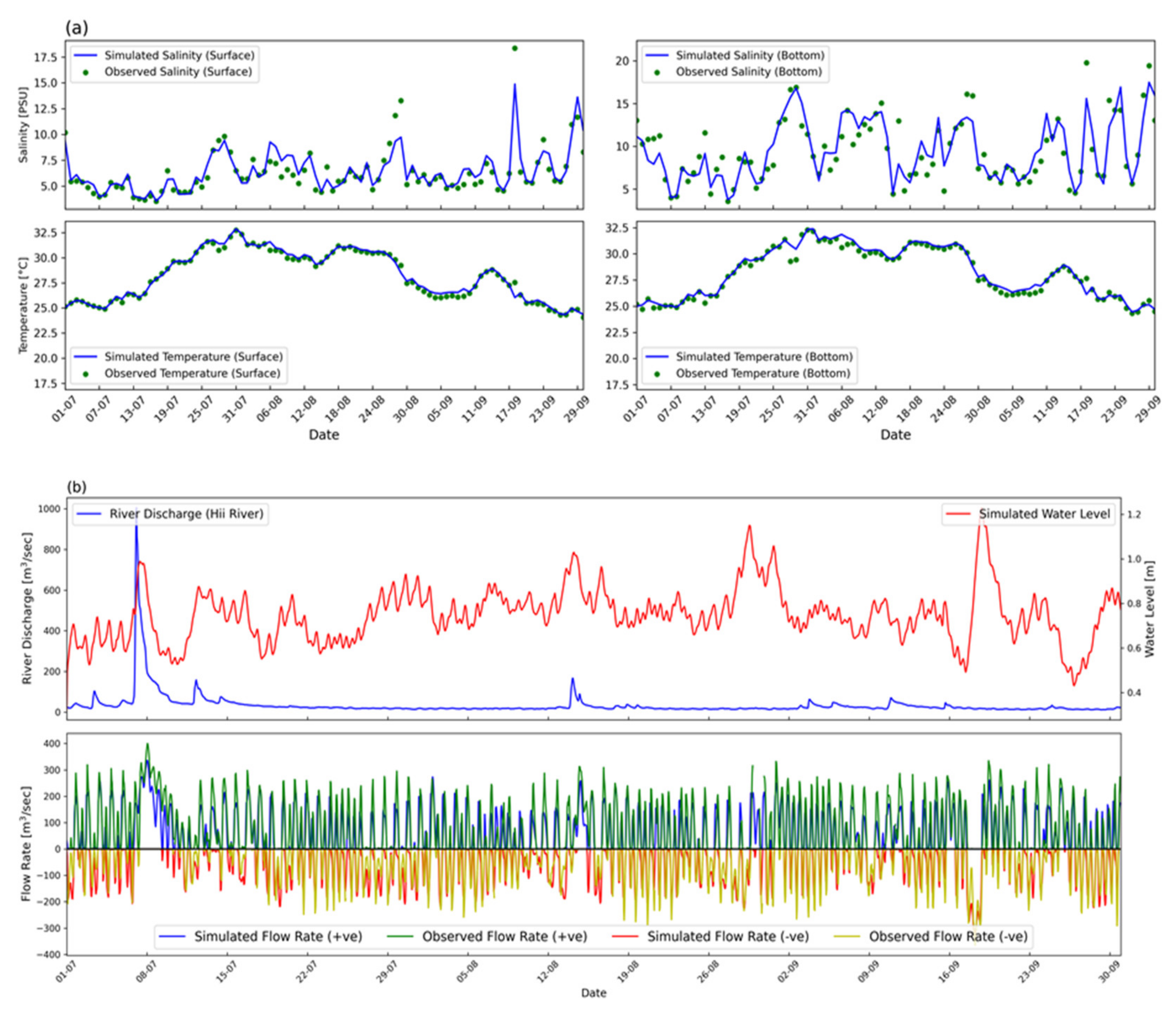

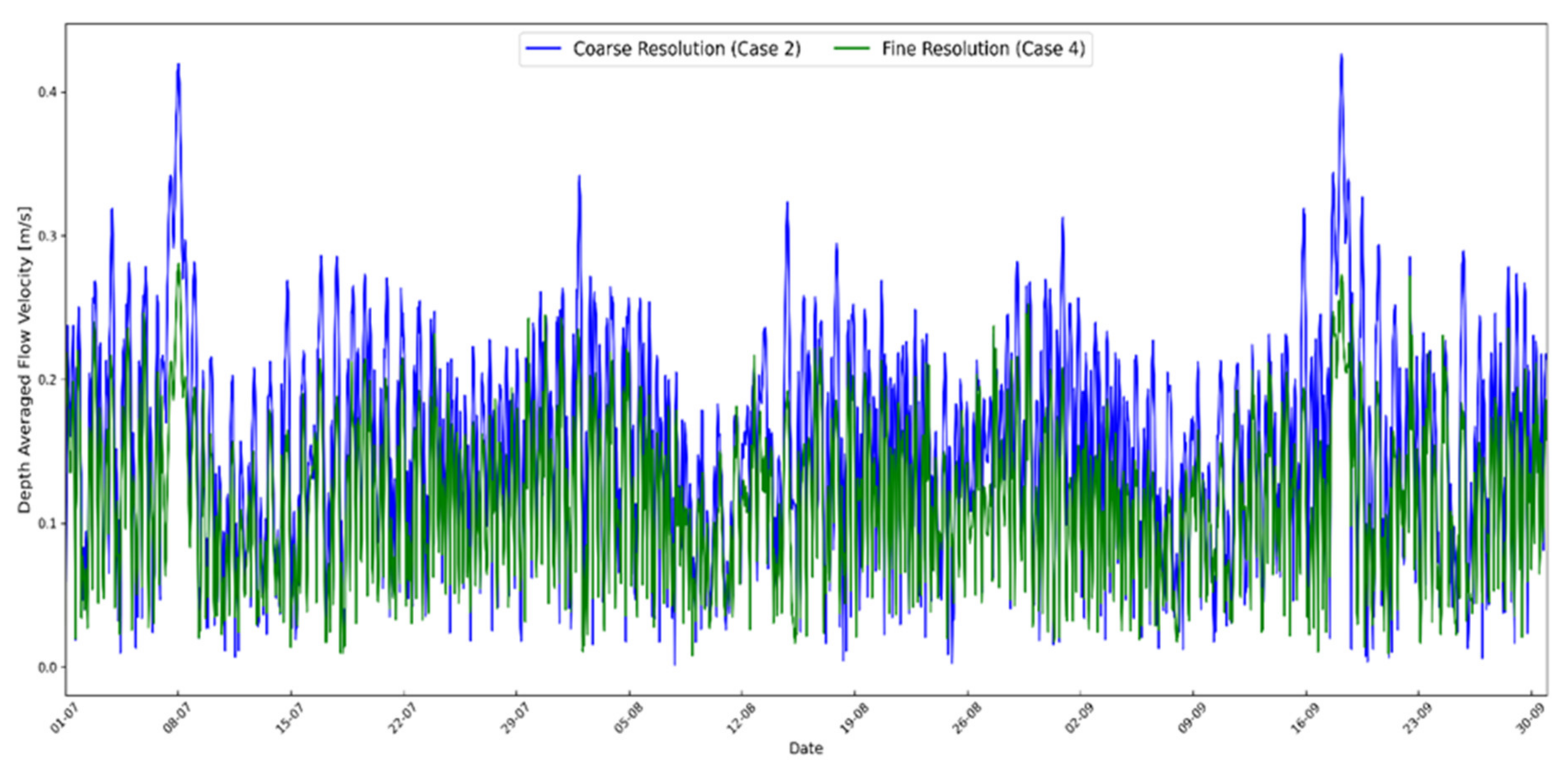
| Model | Ise Bay Simulator |
|---|---|
| Simulation Period | Initial Simulation: 1 July 2012 to 31 July 2012 Final Simulation: 1 July 2012 to 30 September 2012 |
| Meshing | Coarser Mesh: Horizontal: 200 m × 200 m (31 × 15 grid points) Vertical: 22 layers (−8.0 m to 1.0 m) Finer Mesh: Horizontal: 50 m × 50 m (127 × 48 grid points) Vertical: 22 layers (−8.0 m to 1.0 m) |
| Turbulence Model (Horizontal) | Sub grid-scale model (SGS) |
| Turbulence Model (Vertical) | Nakamura Model (Improved Henderson-Sellers Model) |
| Input data | Water Level: Hourly Tides at both ends of Ohashi River. Open Boundary Conditions: Hourly water quality profile observed at upstream and downstream of Ohashi River. River Discharge: Observed RD of Asakumigawa. Weather Data: Air Temperature, Solar Radiation, Wind Velocity, Wind Direction, and Precipitation (Observed at Matsue weather station). |
| Land Water Interface Conditions | Coefficient of Friction (River Bed): 0.0026 Coefficient of Friction (Vertical River Wall): 0.00 |
| Model Input Conditions | Parameters | Source |
|---|---|---|
| Initial Conditions | Water Temperature, Salinity, Elevation | Arbitrary Value |
| Surface Conditions | Air Temperature, Solar Radiation, Wind Components, Rainfall, Surface Pressure, Vapor Pressure | JMA |
| Open Boundary Conditions | Water Temperature, Salinity | MLIT |
| Riverine Conditions | River Discharge, Water Temperature, Salinity | MLIT |
| Case | Meshing | Average Water Depth (m) | Area (m2) | Volume (m3) | |
|---|---|---|---|---|---|
| I, J, K (#) | Size (dx, dy, dz) (m) | ||||
| 1 | 31, 15, 22 | 200, 200, 0.50 | 3.46 | 2,520,000 | 8,726,000 |
| 2 | 31, 15, 22 | 200, 200, 0.50 | 3.69 | 2,520,000 | 9,301,200 |
| 3 | 127, 48, 22 | 50, 50, 0.50 | 3.33 | 1,570,000 | 5,236,925 |
| 4 | 127, 48, 22 | 50, 50, 0.50 | 5.32 | 1,570,000 | 8,348,975 |
| Case | R2 | RMSE | ||
|---|---|---|---|---|
| Westward Flow | Eastward Flow | Westward Flow | Eastward Flow | |
| 1 | 0.65 | 0.58 | 75.31 | 36.49 |
| 2 | 0.72 | 0.61 | 56.40 | 43.43 |
| 3 | 0.61 | 0.55 | 96.64 | 40.16 |
| 4 | 0.64 | 0.59 | 78.03 | 39.63 |
| Case | R2 | RMSE | ||
|---|---|---|---|---|
| Westward Flow | Eastward Flow | Westward Flow | Eastward Flow | |
| 2 | 0.66 | 0.66 | 56.73 | 42.05 |
| 4 | 0.50 | 0.60 | 78.86 | 43.09 |
Publisher’s Note: MDPI stays neutral with regard to jurisdictional claims in published maps and institutional affiliations. |
© 2021 by the authors. Licensee MDPI, Basel, Switzerland. This article is an open access article distributed under the terms and conditions of the Creative Commons Attribution (CC BY) license (https://creativecommons.org/licenses/by/4.0/).
Share and Cite
Hafeez, M.A.; Inoue, T. Determination of Flow Characteristics of Ohashi River through 3-D Hydrodynamic Model under Simplified and Detailed Bathymetric Conditions. Water 2021, 13, 3076. https://doi.org/10.3390/w13213076
Hafeez MA, Inoue T. Determination of Flow Characteristics of Ohashi River through 3-D Hydrodynamic Model under Simplified and Detailed Bathymetric Conditions. Water. 2021; 13(21):3076. https://doi.org/10.3390/w13213076
Chicago/Turabian StyleHafeez, Muhammad Ali, and Tetsunori Inoue. 2021. "Determination of Flow Characteristics of Ohashi River through 3-D Hydrodynamic Model under Simplified and Detailed Bathymetric Conditions" Water 13, no. 21: 3076. https://doi.org/10.3390/w13213076
APA StyleHafeez, M. A., & Inoue, T. (2021). Determination of Flow Characteristics of Ohashi River through 3-D Hydrodynamic Model under Simplified and Detailed Bathymetric Conditions. Water, 13(21), 3076. https://doi.org/10.3390/w13213076







